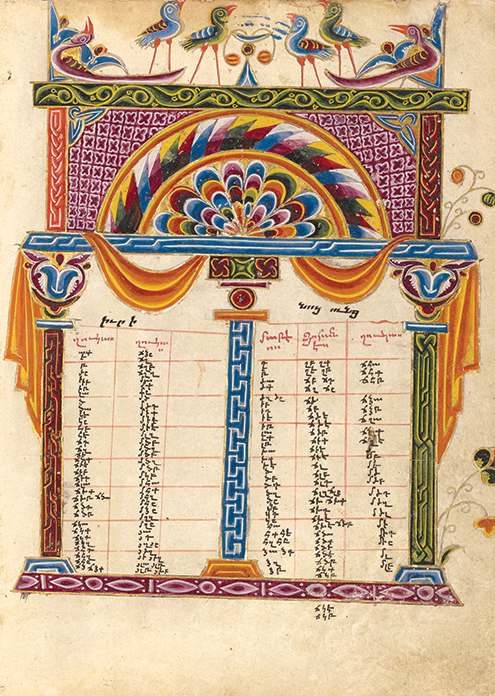
Visitors can explore codes in medieval manuscripts including “Canon Table Page,” 1615. (photo courtesy of the Getty Museum)
The J. Paul Getty Museum presents “Symbols and Signs: Decoding Medieval Manuscripts,” an exhibition showcasing how medieval scribes and artists used textual and visual strategies to captivate readers and engage them in deciphering enigmatic codes.
The exhibition, drawn predominantly from the Getty’s manuscripts collection with additions from the museum’s holdings in photographs, will be on view at the Getty Center from May 20–Aug. 10.
Medieval manuscripts were filled with “codes” such as monograms, ciphers and visual symbols that fascinated those living during the Middle Ages. Codes can be defined as a system of words, letters, figures or symbols substituted for other words, and only someone familiar with the system could correctly decode the information. Many were based on cultural references that audiences at the time could understand, similar to today’s use of emojis or text abbreviations.
“People today are fascinated by ciphers, puzzles and secrets,” said Elizabeth Morrison, senior curator of manuscripts at the Getty Museum and co-curator of the exhibition. “This exhibition explores the clever ways that scribes and artists of the past deliberately and playfully employed such codes to arrest the attention of medieval audiences and engage their minds.”
The exhibition will be divided into three sections: word codes, image codes and schematic codes. The first section, word codes, highlights how medieval manuscripts, written in familiar alphabets such as Latin, Hebrew or Armenian, often appear strange due to their intricate and imaginative design. The texts used abbreviations, monograms and names as playful puzzles for medieval audiences.
Image codes focuses on the visual arts from the Middle Ages, which employ abstract symbols, personal emblems and selective colors to capture complex thoughts and hierarchies. The tactics were clear to medieval audiences but require some explanation for modern viewers to be able to understand.
Lastly, schematic codes explores how codes devised in the Middle Ages, such as musical notation, indexes and calendars, organize complex information visually, a solution invaluable in modern life as well. Medieval scribes and artists strove to make codes enjoyable for the mind and the eye.
To complement the exhibition, Getty will host an online conversation about the Voynich Manuscript with Dr. Lisa Fagin Davis on June 13 at noon.
The Getty Center is located at 1200 Getty Center Drive.
